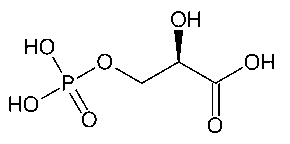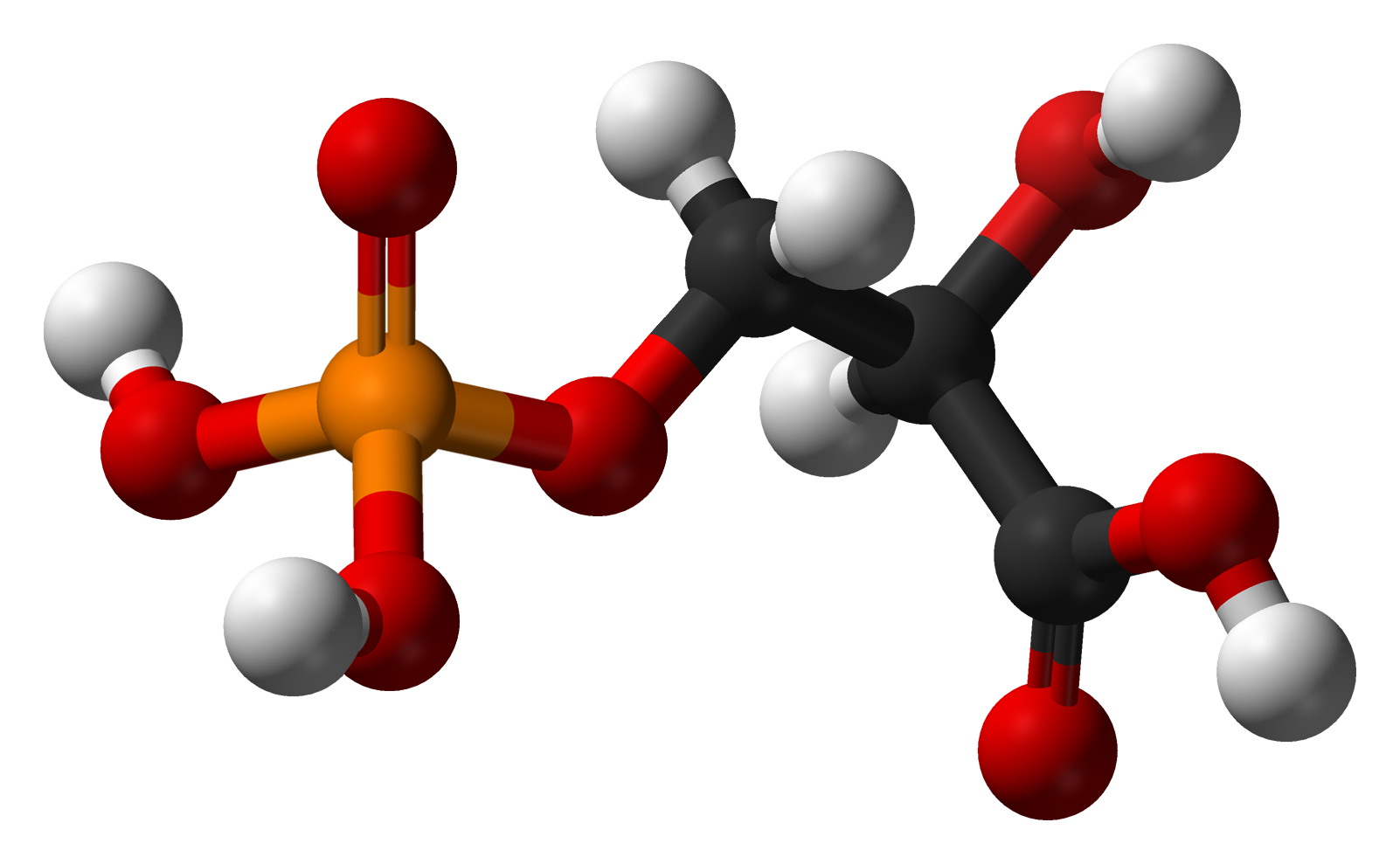3-Phosphoglyceric acid
- D-3- phosphoglycerate
- (2R )-2- hydroxy-3- phosphonooxypropansäure
Template: Infobox chemical / molecular formula search available
D-3- phosphoglycerate (also D-3- phosphoglyceric acid ) is an intermediate of gluconeogenesis and glycolysis, as well as the end point of one of its byways, the Rapoport Luebering cycle. It is caused by the reversible reaction of D -1 ,3- bisphosphoglycerate and adenosine diphosphate ( ADP) to adenosine triphosphate (ATP ), and D -3 -phosphoglycerate. This reaction is catalyzed by phosphoglycerate kinase. Phosphoglycerate converts it to the D-2 -phosphoglycerate.
D-3- phosphoglycerate is also an intermediate product of the Calvin cycle, that the fixation of carbon dioxide is done by the carboxylation of D- ribulose -1 ,5- bisphosphate to an unstable intermediate which rapidly is hydrolyzed to two molecules of D-3- phosphoglycerate. This reaction is catalyzed by ribulose -1 ,5- bisphosphate carboxylase (abbreviated Rubisco ) catalyzed. D-3- phosphoglycerate further reacts with the consumption of one molecule of ATP per molecule of D-3- phosphoglycerate into D-1 ,3- bisphosphoglycerate. This reacts further to D- glyceraldehyde -3- phosphate, which ultimately energy- rich compounds such as D -glucose can be formed.
Moreover, D-3- phosphoglycerate an important precursor for the biosynthesis of the amino acids L-serine, L-cysteine and glycine dar.
The L- enantiomer of 3-phosphoglycerate has no biological relevance.








